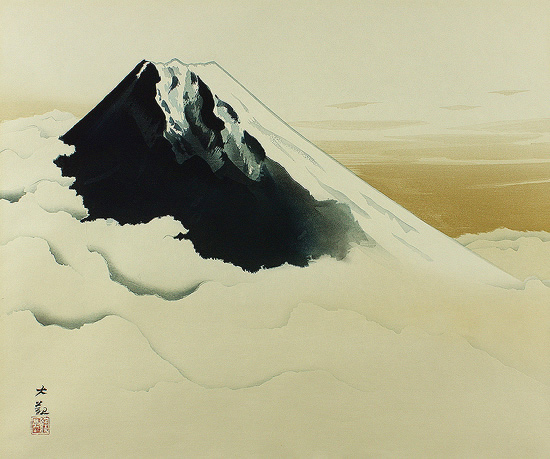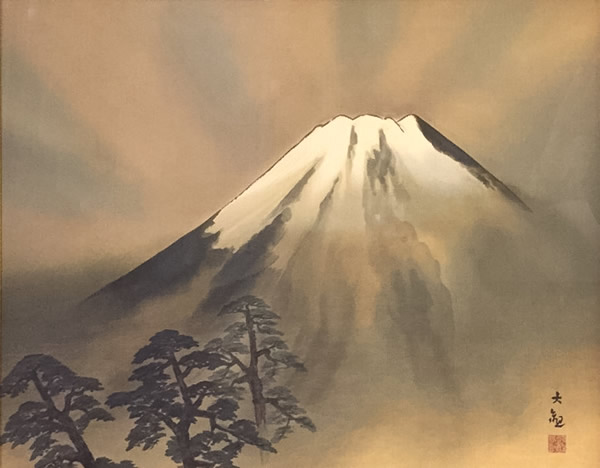Home > Artists > Matazo KAYAMA > Persian Cat (eyes mismatched in color)
Matazo KAYAMA
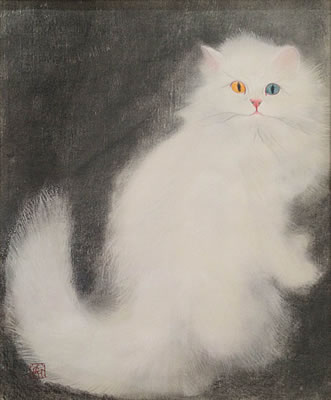 |
||
| Item ID | ■ | 4000-14081204 |
| Title | ■ | Persian Cat (eyes mismatched in color) |
| Category | ■ | collotype, hand-painting |
| Theme | ■ | cat |
| Year | ■ | 1992 |
| Image size | ■ | 47.0*38.5cm |
| Remark | ■ | ed50 |
| Market Price : 700,000JPY |
| Currency Converter |
| Please click the following "Request a Free Estimate" button for our price with shipping. |
 |
| Inquiry |
Matazo KAYAMA Biography
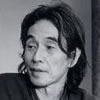
1927 Japanese painter and print maker, Matazo KAYAMA was born in Kyoto on September 24. His father was a kimono designer.
1944 Graduated from the Department of Japanese Painting of the Kyoto Municipal School of Fine Arts and Crafts, where his work attracted much attention, and entered the Tokyo School of Fine Arts (now Tokyo National University of Fine Arts and Music).
1949 Graduated from the Tokyo School of Fine Arts. Studied under the artist Yamamoto Kyujin (1900-1986).
1950 ‘Self-Portrait’ and ‘Zoo’ won the Study Group Award at the 2nd Sozo Bijutsu Spring Exhibition. ‘Elephant and Bird’, ‘Green Hill’, and ‘Blooms of Summer’ were exhibited in the 3rd Sozo Bijutsu Exhibition in September.
1951 The Sozo Bijutsu Exhibition was incorporated into the Japanese painting section of the Shin-Seisaku Kyokai (New Creation Association). Primeval Age was exhibited in the 15th Shin-Seisaku Exhibition and won the New Artist Award.
1952 Exhibited ‘White Horse’ in the 4th Shin-Seisaku Spring Exhibition.
1953 In June, he married Hagiya Mitori and moved to Tsurumi near Yokohama. Established ‘Crane and Cranes in Flight’ in the 5th Shin-Seisaku Spring Exhibition. Exhibited ‘Bison’, ‘Moon and Rhinoceros’, ‘Lake and Deer’, and Savannah in the 17th Shin-Seisaku Exhibition in September and won the New Artist Award.
1954 Exhibited ‘Moon and Zebra’ and ‘Camel’ in the 1st Contemporary Japanese Art Exhibition held by Mainichi Newspapers. Exhibited ‘Sad Deer’ and ‘Lost Deer’ in the 18th Shin-Seisaku Exhibition in September and won the New Artist Award.
1955 Exhibited ‘Siesta and Deer’ in the 1st Hikobayu Exhibition. Exhibited ‘Galloping' the first of the artists major screens, in the 19th Shin-Seisaku Exhibition and won the New Artist Award. In October, held a solo exhibition at the Yoseido Gallery.
1956 He was elected a member of the Shin-Seisaku Association by the Association Fellows.
1957 Exhibited Black Birds in the 4th International Art Exhibition in Japan, and won the Fine Work Award. In September, exhibited Winter in the 21th Shin-Seisaku Exhibition.
His daughter Fumiko was born.
1958 Exhibited Winter (1957) and Flocking Crows (1956) in the "European Touring Exhibition of Contemporary Japanese Painting", shown at 11 cities in 6 countries. In September, exhibited the screen painting. Waves in Summer, Waves in Winter in the 22th Shin-Seisaku Exhibition. Exhibited Flight (1957) in the 2th Guggenheim Award International Art Exhibition", and received the Group Award with Kawabata Minoru and Yamaguchi Takeo.
1959 The art group "Todoroki-kai" was organized by the Murakoshi Gallery consisting of Ishimoto Tadashi, Yokoyama Misao, and Kayama Matazo. Exhibited A Bleak Wind, Cat, and A Pair of Horses in the 1st Todoroki-kai Exhibition.
1961 Held a one-man exhibition at the Janet Nestler Gallery (New York), which comprised 38 works, including Birds in the Forest. Exhibited Island of Fire in the 25th Shin-Seisaku Exhibition.
1963 Held a one-man exhibition consisting of about 30 small works, including Horse, Stag Beetle, Canary, and Heron’s Fledgling, at the Murakoshi Gallery in Tokyo and the Kansai Gallery in Osaka.
1966 Became a professor of Japanese painting at Tama Art University. In November, exhibited Screen of Floiver Fans, Burning Glow, and The Shore at a joint exhibition with Yokoyama Misao.
1967 Exhibited Winter (1957) in the "Masterpieces of Modern Japanese Painting exhibition, held from June to September at the Hermitage Museum in Leningrad (now Sankt Peterburg) and the Pushkin Museum in Moscow. Exhibited New Moon Screen in the 31th Shin-Seisaku Exhibition.
1968 Exhibited The Milky Way and Peony in the 9th Todoroki-kai Exhibition. Exhibited Star festival Screen in the 32th Shin-Seisaku Exhibition in September. Commissioned by JAL for a jumbo-jet cabin mural, titled Panorama of Galaxy.
1969 Exhibited March Screen, a work inspired by a swarm of yellow and white butterflies that he saw on Mt. Aso, in the 33rd Shin-Seisaku Exhibition. Exhibited 16 works in the 10,h Todoroki-kai Exhibition, including his first ink paintings, tilled Peony. Cat. Carp, and Snow, which attracted much attention.
1972 His first nude painting. Persian Cat. was exhibited in the 13th Todoroki-kai Exhibition and attracted much attention. Illustrated My Parly Childhood a serial novel by Inoue Yasushi (1907-1991), for Mainichi Newspapers.
1973 His colleague and friend Yokoyama Misao died in April Resigned from the Japanese Painting Department of Tama Art University. Received the 5th Japan Art Award from Shim ho Arts Promotion. Exhibited By the fight of the lull Moon in the 3th Shin-Seisaku Exhibition.
1974 Designed a stone pagoda at Jindai-ji Temple in Tokyo for the llrst anniversary of Yokoyama Misao's death. A new art group called "Soga-kai" emerged from the Japanese painting section of the Shin-Seisaku Association, and he became a member. Illustrated A Chance Meeting, a serial novel by Inoue Yasushi. for Mainichi Newspapers.
1975 An exhibition of his work, sponsored by Nihon Keizai Shimbun, was held at the Shibuya Seibu department store in Tokyo. Exhibited Nude and Cat Study at the V Soga-kai Spring Exhibition. In June, he visited China as a member of the Japanese Artists Delegation to China, and there visited main places, including Beijing. Datong, Xi'an, and Shanghai.
1977 Again became a professor at Tama Art University. Created Sun and Wares, a ceramic mural, for the lobby of the head office of Nihon Keizai Shimbun in Osaka. Exhibited Nude Study in the 3th Soga-kai Spring Exhibition. Produced the ceramic mural of Thousand Cranes for the head office of the Yamatane Securities Company in Osaka. Painted Wave, Plant, and Fan Screen for the dining room of the Japanese Embassy in the United States.
1978 In July, his work was included in A Hundred Nudes, a collection of nudes by contemporary Japanese artists published by NHK (Japan Broadcasting Association). To commemorate this publication, an exhibition of nudes was held in Tokyo, Osaka, Nagoya, and Kobe. An exhibition of his work, sponsored by Nihon Keizai Shimbun and
including 113 Japanese paintings in traditional style, 43 prints, 6 kimono, and 46 ceramic works was held in Tokyo, Yokohama, Nagoya, Osaka, and Kyoto. Completed the wall-painting Snow. Moon, and ( berry Blossoms. commissioned by the National Museum of Modern Art, Tokyo.
1980 The 30th Ministry of Education Selective Art Award was given to Wares in Moonlight, which had been exhibited the previous year.
1983 In January, he visited the National Palace Museum in Taiwan, and in April visited Beijing to give lectures at the Central Art Institute.
1984 Completed the ceiling painting Dragon at Kuon-ji Temple. Also completed the- paintings on 16 sliding doors of the Main Hall in the Suinieiro of Kuon-ji Temple. To commemorate the completion of the ceiling painting, an exhibition was held at Nihonbashi Mitsukoshi department store in Tokyo.
1985 Exhibited about 140 works including kimono and sashes in "The World of the Decorative Art of Kayama Matazo” exhibition sponsored by Nihon Keizai Shimbun. The exhibition "Meeting of the Potter Kaneshige Sozan and the Artist Kayama Matazo" was held at Kochukyo and included about 50 of their works for which Kayama painted with gold and silver on pottery made by Kaneshige.
1986 In October, exhibited past and recent nudes in "The World of Nudes : Kayama Matazo", sponsored by the Seibu Museum of Art, Tokyo. In December, the first volume of A Collection of 1,000 Nudes was published by Chuokoron-sha.
1987 In March, he was invited by the Association of Chinese Art to visit Beijing, Shanghai, and Hangzhou as a member of the committee for establishing a contemporary Chinese art gallery in Beijing. In June, he went on a sketching tour in China, visiting Changjiang. Sanxia, Wuhan, Yueyang, Dongtinghu, and Chongquing. The English edition of Kayama Matazo was published by Kodansha International. In August, visited Beijing and lectured on the techniques of Nihon-ga at the Central Art Institute, and went to the Great Wall to sketch. In October, exhibited The Great Wall in the 14th Soga-kai Exhibition. On the request of the chairman of the Japan-America Association of St. Louis, he donated the Star Festival Screen to the St. Louis Art Museum on the occasion of the opening of a building housing Japanese art there. In November, visited the National Palace Museum in Taiwan. In December, exhibited Hazy Moon in the Choon-kai exhibition.
1988 From April to June, an exhibition of mainly his early paintings was held in Hiroshima, Okayama, Nagoya and Iwaki. In March, resigned from Tama Art University. In April, became a professor at Tokyo University of Fine Arts. In May. completed the screen A Thousand ( nines for the new premises of the Tokyo Mock exchange. Completed the textile Dragon King to be used to decorate a float in the Kyoto Gion Festival. From September to November, the "exhibition of Kayama Matazo Screens" was held at Takashimaya department store in Tokyo, Yokohama, Kyoto, and Osaka, sponsored by Nihon Keizai Shimbun. In October, exhibited Autumn (masses in the 15* Sogakai Exhibition.
1989 In September, produced an original painting for the official commemorative medal of the "Osaka International Garden and Greenery Exposition". In October, exhibited /;/ the Manner of Northern Song Ink Landscapes of Snow Scenes in the 16th Soga-kai Exhibition.
1990 In January, the exhibition "The World of Kayama Matazo", comprised mainly of 30 prints, was held at the Yurindo Gallery in Yokohama. In June, as the 9th artist of the "BMW Art Car" series, painted an automobile with a decorative snow -motif paintings. The "Kayama Matazo Exhibition" of prints was held at the Galerie de Francony in Paris and he visited Europe (Paris, and Berlin) for the first time. In September, went to China and stayed about a month. During that time he lectured at the Central Art Institute, where he received the title professor emeritus. In October, exhibited Weeping Cherry Tree at Night in the 17th Soga-kai Exhibition.
1991 In March finished building his new studio in Oiso. Kanawaga prefecture. In October, exhibited ft the Manner of Northern Song Snow Scene Ink Landscapes at the 18"' Soga-kai Exhibition. In November, visited the National Palace Museum in Taiwan.
1992 In January, a special cultural program called "The World of Painter Kayama Matazo" was broadcast on NHK satellite TV. In July, became a member of the permanent committee of the Japan-China Culture Exchange Association. Over a one-month period, contributed to the "Watashi-no-rirekisho (My History)" series in Nihon Keizai Shimbun. In October, exhibited In the Manner of Northern Song Ink Landscapes of Gold Forests and Snowy Mountains in the 19th Soga-kai Exhibition. In November, completed the ceramic mural Sun, Moon, and Four Seasons for the New Tokyo International Airport Terminal 2 departure lounge. In December, 'Watashi-no-rirekisho (My History)” was published by Nihon Keizai Shimbun under the title Shiroi Gafu: Kayama Matazo (The White Canvas : Kayama Matazo)
1993 In Februarys went on a sketching trip to Mr. Fuji. In April, the exhibition "Japan: Selected Works of Kayama Matazo" was held at the China Art Gallery in Beijing, sponsored by the Ministry of Culture, the People's Republic of China, Nihon Keizai Shimbun, and Nikkei Culture. The exhibit, which included 18 screen paintings, as well as animal paintings and nudes attracted much attention. In May, the same exhibition was held in Shanghai, and he spoke with the artist Cheng Shifa at the Shanghai Art xMuseum. In September, the "Exhibition to Commemorate Kayama Matazo's Return from China", which comprised 31 works including screen paintings, was held at Nihonbashi Takashimaya department store in Tokyo, Kyoto, Yokohama, and Osaka.
1994 Joetsu City sponsored an "Exhibition of Work by Kayama Matazo" at the Joetsu City Museum, at which 32 works by Kayama were displayed, including folding screens, kimonos, pottery and fans. An exhibition was held at the Tokyo National University of Fine Arts and Music Museum of Art, entitled “Kayama Matazo 1950-60 : Retirement Commemorative Exhibition", to mark the Artist's retirement from his professorship at Tokyo National University of Fine Arts and Music. Nineteen exhibits from the ten year period subsequent to his graduation from the University were displayed at this exhibition.An "Exhibition of Folding Screens and Pictures by Kayama Matazo" was held at the Tokyo Daimaru Museum, sponsored by the Asahi Shinbun, at which 40 folding screens were displayed (This exhibition traveled to Fukuoka, Osaka and Kyoto).
1995 An exhibition was held at the Toyama Prefectural Museum of Modern Art entitled "Exhibition of Work by Kayama Matazo", at which 16 folding screens were shown as part of a collection of 47 items of work, along with 10 sketches and 26 woodblock prints.
An exhibition was held at the Nihonbashi Kochukyo, entitled "Exhibition of joint ceramics work by Imaizumi Imaemon and Kayama Matazo", sponsored by Nikkei Culture. 23 items of painted ceramics were exhibited.
1996 Designed a date stamp for the Tokyo Central Post Office, containing a picture of a folding screen. An exhibition was held in the Japanese Galleries at the British Museum, entitled "KAYAMA MATAZO — New Triumphs for Old Traditions", sponsored by the British Museum and the Nihon Keizai Shinbun. 73 works were exhibited such as screen paintings, tableaux, and original picture cover of magazine. This exhibition was run for two months with a rotating number of pieces on display.
1997 An exhibition was held at. and sponsored by, the Niigata Prefectural Museum of Modern Art, entitled “Exhibition of Works by Yokoyama Misao and Kayama Matazo". At this exhibition, 17 of the Artist's early works were displayed. The Artist was selected, as part of a group of 50 artists from around the world, to be part of the design for British Airways' World Image, in line with the introduction of the company's new corporate image. For this, he created the image of Waves and Cranes, which was included on the tails of Boeing 737 aircraft and British Airways tools. The Artist designed picture postcards for use as New Years' Greetings Cards for 1998. The Artist created Umyuzu (a picture of cloud dragons) for the ceiling of the Tenryuji Temple chamber (the head temple in the Rinzai Sect of Zen Buddhism). This was done by building facilities for creating a ceiling picture within his own studio, and then transferring the finished work to the temple in Kyoto and putting it together piece by piece on the ceiling of the chamber. This process was recorded by NHK in a documentary “Dragon Flying in the Sky" on the new temple ceiling. As a result of this work, the Artist was selected as a Person of Cultural Merit.
1998 An exhibition was held at the Tokyo National Museum of Modern Art entitled "Exhibition of Work by Kayama Matazo", sponsored by the Tokyo National Museum of Modern Art and the Nihon Keizai Shinbun. 60 representative works were displayed, based mainly on folding screens. The exhibition traveled to the Hokkaido Museum of Modern Art, sponsored by the Tokyo National Museum of Modern Art and Hokkaido Museum of Modern Art and Nihon Keizai Shimbun and Sapporo Television Broadcasting.
1999 Designed the original picture Akikusa (Autumn Grass) for the roof of the "Kosetsuden" chamber of the Zojoji Temple, the main temple of the Jodo-shu Sect of Buddhism.
An exhibition was held at the Murakoshi Gallery in Ginza, Tokyo, entitled "A Small Four Seasons — Work by Kayama Matazo", at which 56 cover pictures used on editions of Chuo Koron Magazine were displayed. The Artist designed a postal stamp on the theme of the song "Like a flow of the River" for the eighth series of stamps on the theme of well-loved songs, and w as asked to design a paper fan for the Ministry of Posts and Communications' Postal Life Insurance Bureau on the theme of "the beginning of autumn".
2000 An exhibition was held in Tendo City Museum of Art, entitled "Drawing Cherry Blossom — Kayama Matazo’s 'SAKURA' Exhibition", sponsored by Tendo City and Tendo City Museum of Art. An exhibition was held at Seki Art Gallery entitled "Kayama Matazo - the Changing Four Seasons", sponsored by Seki Art Gallery.
2001 The Artist designed the Special stamp for the Ministry of Posts and Telecommunications on the theme of “Flying", to be used in the Internet Exhibition Commemorative Stamps (commemorative project for the New Millenium). An exhibition was held at Seki Art Gallery entitled "Exhibition of Work by Kayama Matazo — Vision and The World of Loneliness / Generic Art", sponsored by Seki Art Gallery. An exhibition was organized at Takashimaya entitled "Joint Inhibition of Works by Kayama Matazo and Kayama Tetsuya". at which pictures, folding screens, painted ceramics, and ceramics by Kayama's eldest son Tetsuya were displayed in Nagova. Osaka, Kyoto and Yokohama.
2004 Passed away
If you have any questions, please fill out the following inquiry form.
| Inquiry Form |

 Japanese Painting Gallery is an online art gallery dedicated to Japanese painting, Kakejiku, Ukiyoe, and so on. You can always find quality artworks and service.
Japanese Painting Gallery is an online art gallery dedicated to Japanese painting, Kakejiku, Ukiyoe, and so on. You can always find quality artworks and service. Payment can be made via PayPal using your credit card. Please log in your PayPal account and check out.
Payment can be made via PayPal using your credit card. Please log in your PayPal account and check out. Japanese Painting Gallery stocks thousands of magnificent artworks to satisfy all of your needs.
Japanese Painting Gallery stocks thousands of magnificent artworks to satisfy all of your needs.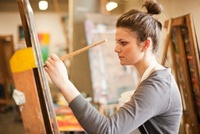 Japanese Painting Gallery sells your artworks to all over the world.
Japanese Painting Gallery sells your artworks to all over the world.